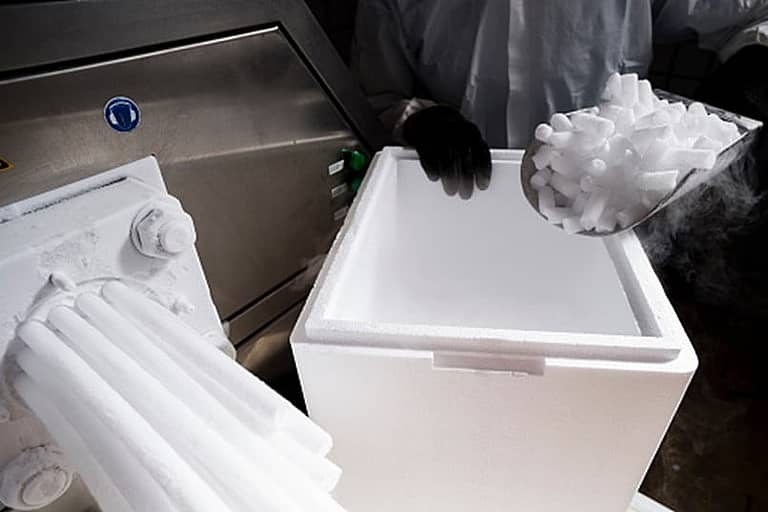A recent OSHA News Release reports on the tragic case involving a commercial delivery truck driver who succumbed to asphyxiation from carbon dioxide released from the dry ice that was being transported to a university. This fatal incident serves as an important reminder of the need to follow correct safety procedures when transporting dry ice.
In this case, the driver’s employer was cited with violations including exposing workers transporting dry ice to asphyxiation hazards from carbon dioxide gas, failing to establish and use a written hazard communication program for employees handling dry ice, and not providing delivery workers information and training on handling hazardous chemicals.
As we discussed in a previous blog, dry ice is the solid form of carbon dioxide (CO2), and unlike ice made from water, dry ice does not melt. Instead, it rapidly changes from a solid to carbon dioxide gas in a process called sublimation. Carbon dioxide gas is heavier than air and because of that it can displace oxygen, causing difficulty breathing and possible asphyxiation.
Dry ice is commonly used in laboratories to keep biological shipments cold. When biological material needs to be transported locally between facilities, personal vehicles are sometimes used for transporting materials on small quantities of dry ice. Although the quantities of dry ice allowed to be transported in personal vehicles are relatively small, the expansion ratio of dry ice is high, and even small quantities can create an oxygen deficient situation.
The Department of Transportation (DOT) Materials of Trade (MOT) regulation applies to the workplace transportation of limited quantities of certain materials (including dry ice) using a personal vehicle. Transport of the materials listed in the regulation in private vehicles is exempt from most of the DOT hazardous materials regulation requirements, as long as the MOT requirements are followed, and the transport is in direct support of an organization’s business.
For dry ice, the following MOT requirements must be followed:
- The container holding the dry ice must be designed and constructed to permit the release of carbon dioxide gas in order to prevent a buildup of pressure that could rupture the container. A Styrofoam box is an example of container that is appropriate for transporting dry ice.
- The package must be marked “Dry Ice.”
- No more than 200 kilograms (kg) of dry ice can be transported at any one time. (Although 200 kg of dry ice is allowed under the regulation, a considerably smaller amount, such as 5 kg, might be more appropriate for an organization’s needs and is also safer.)
- The package must be transported in a trunk that is completely separate from the main cabin of the car. It cannot be transported in a hatchback vehicle for instance.
- The package must be secured against movement and protected against damage.
- The operator of the vehicle must be informed of the presence of dry ice and its hazards, and be aware of the MOT regulations.
If an employee chooses to use their personal vehicle for transport, they are encouraged to discuss coverage with their own insurance carrier. It is generally recommended to use a dangerous goods courier service or a standard carrier (e.g. FedEx) for transport when possible to avoid potential issues with transport in personal vehicles.
For additional information on dry ice transportation safety, please email us at [email protected].
This blog was written by Beth Graham, Safety Partners’ Director of Quality, Research, and Training.


